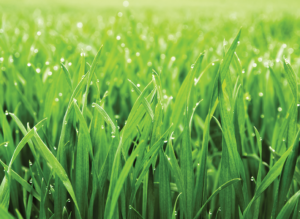
DIMENSION Crabgrass Control with Fertilizer – The optimum time for the application of granular pre-emergent crabgrass control (delivered with an excellent, organic-based fertilizer) is mid-April through early May. Crabgrass, which must be controlled every year in sunny lawns, is a summer annual, grassy weed. The plants germinate from seed in spring, thrive in the heat of the summer, then die with frost in the fall after setting its seed. Although there are some pretty effective chemical sprays that will kill actively growing crabgrass (post-emergent) in June and July, it is most effectively controlled by preventing seed germination in the spring (pre-emergent). DIMENSION is the only PRE and POST-EMERGENT crabgrass control product on the market which both prevents seed germination for up to 16 weeks and kills newly germinated plants. This very safe control product and fertilizer is activated by rain, and the application is not affected by mowing, rain, or other lawn activities.
Broadleaf Weed Control in April – Perennial broadleaf weeds (dandelions, plantains, clover, etc.) are the bane of the suburban homeowner’s lawn maintenance program. Generally, it is thought that if you don’t have dandelions in your lawn every April-May, you’re perceived to have a “nice” lawn. The best way to have no dandelions blooming in April-May is to make a September application of selective wee control. Dandelions, plantain, clover, and other perennial broadleaf weeds can only be eliminated or controlled while their leaves and roots are ACTIVELY growing. Leaves and roots don’t start growing until after blooms have passed, so if you didn’t apply TRIMEC last September, you will probably have dandelions and other perennial broadleaf weeds in your lawns this spring. You can get excellent weed control in the spring, but if you make application before the end of April, when blooms have passed and leaves are growing actively, you’ll probably not kill the weeds. You’ll shock them, but they’ll recover. Remember to kill broadleaf perennial weeds in September, AT THE END OF THEIR ACTIVE GROWING SEASON for a weed free lawn the following spring.
Spring Seeding – As we continue to preach: spring seeding for improving turf density is to be avoided whenever possible. Only in emergencies (construction, lawn damage, shady areas) should spring seeding even be considered, and whenever you do have to do some spring seeding, be prepared to reseed the areas in the fall. In the spring, seed germination is slow due to cool soil temperatures. And after the seed has germinated, no roots will be generated after late June when soil temperatures warm into the 80s and cool season grasses go semi-dormant. So, you’ll end up with sparse germination and minimal root development and be facing the most difficult time of the growing year, the summer. It can’t work; it doesn’t work. Do your general seeding in the late summer/early fall, and keep spring seeding to a minimal.
Core Aeration and Liming in April – These two lawn maintenance activities, which we strongly recommend both be done once or twice each year, are primarily soil conditioning activities. Our soils are clay-based (heavy) and acidic. They grow great lawns if they are conditioned regularly, but the soil density resists root development and moisture penetration, and the acidity reduces the available nutritional value of fertilizers by reacting chemically with the nitrogen, phosphorus and potash and tying them up. Both conditioning activities can be done whenever the ground is soft, the grass is growing and moisture is regular; thus, April is a terrific time for either liming or core aeration, or both.
